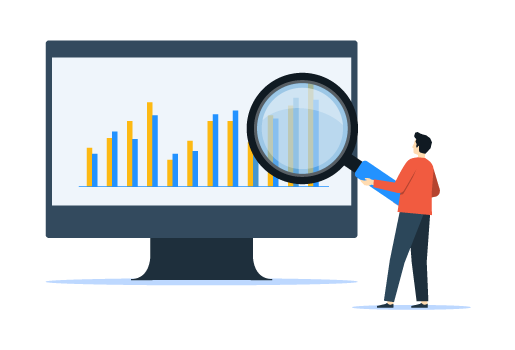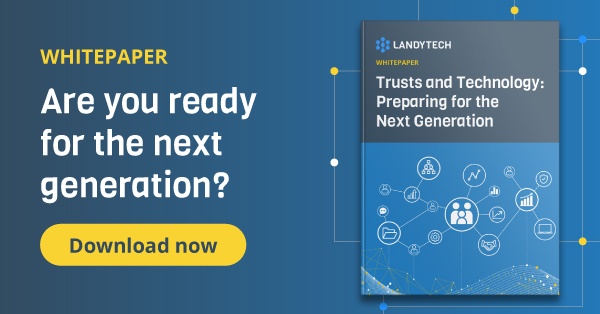Written by Landytech
22 Sep 2022Technology is vital for trustees looking to thrive in the modern world. Automating data management processes and autonomous investment monitoring doesn’t just help to save resources, it also gives trustees the opportunity to focus on delivering a better overall client experience, to enable business growth.
Trustees already use a variety of software to help them, including trust administration software, accounting systems, amongst others. But when it comes to data management and investment monitoring, many still rely on reports from investment consultants and the associated manual data consolidation and client reporting processes. Here are five the key reasons trustees are turning to technology to help them with investment monitoring.
1. Automated bookkeeping for investments
Trust investment portfolio data sourced from a number of investment managers and consultants inevitably has dozens of file formats and variations in the content. Dealing with these manually can be a huge time sink. However, technology is now able to source this data directly, automatically transforming this disparate information into a single standardised schema, which can be processed systematically for downstream monitoring and reporting.
Eliminating the manual process of consolidating and reconciling data enables trustees to streamline their internal data management and investment monitoring workflows, reducing operational risk, improving bookkeeping integrity and freeing up time for higher-value interactions with clients.
If these data inefficiencies are not solved, it has a direct impact on margins and recoverability – and mean that dependent processes cannot be scaled. A reliance on mundane, repetitive bookkeeping tasks may also fuel staff turnover and key person risk, damaging morale and heightening the danger that knowledge of mission-critical manual processes will be lost.
Trust investment portfolios increasingly include alternative investments such as private equity, real estate and direct investments. The latest technology includes functionality that enables trustees to seamlessly update transaction and valuation data for any private assets, in dashboards that automatically consolidate this data with any publicly listed assets.
2. Timely investment monitoring
Most trustees wait up to 8 weeks to receive quarterly reports on performance from their investment managers or consultants. But the latest technology can now make investment data available on a t+1 basis, ready for any quarterly investment committees or client reporting. Timely data is especially helpful in volatile and uncertain markets, where there is an expectation from clients that trustees will review performance and exposures more frequently and take swift, decisive action if needed.
Quickly flag IPS breaches
Once trustees have drafted investment policy statements (IPS) with investment managers, client tolerance to risk has been assessed and target asset allocations created, trustees are in the best position to highlight any IPS breaches or style drift to their investment managers. Trustees that receive portfolio data daily can feed third-party alerts system that enable them to quickly flag any breached limits to their investment managers.
Scrutinise investment managers
Timely data also enables them to more closely scrutinise performance, allowing trustees to quickly compare the returns of the trust portfolio against any pre-agreed relative or absolute benchmarks. Slow access to information makes it difficult for firms to track positions and transactions, monitor information in the event the level of exposure to a country or asset type needs to be known quickly. Such an agile view of the portfolio can also enable trustees to better manage cash and liquidity in line with client preferences.
3. The shift to independent data
When it comes to receiving investment performance information from consultants or managers directly, there are inevitably questions around the impartiality of managers’ self-reported information. Although they are regulated and they know you have a fiduciary duty, it does not mean their data is always completely correct. That means trustees are under pressure to access independent data. By connecting directly with banks and custodians, trustees are no longer reliant on self-reported performance data, they are instead able to replicate whole portfolio structures from the ground up using actual market data, line-by-line, for a truly independent view of portfolio performance.
4. Pleasing the auditor
This independent data also goes down well with auditors, who are always keen to see consistency in terms of the pricing methodology. Using an independent data management service allows trustees to consistently specify the pricing methodology, keeping the auditors happy and preventing a round of frustrating conversations with multiple custodians who are all pricing things differently for the same security.
5. bespoke reporting, at scale
In an age where data volumes in the financial industry are mushrooming, clients don’t want to be buried by information. Instead, they are looking for actionable insights – useful, personalised analysis that makes sense of the data overload and presents easy-to-understand conclusions that can be applied in the real world.
Timeliness matters too. We operate in a fast paced, increasingly real-time world, where outmoded data equals heightened risk and missed opportunities. Clients, especially the younger generations, expect the information they receive to be up to date. Tolerance for reporting delays and data inaccuracies is eroding fast. Technology can be the difference between having reports ready in near real time or waiting weeks after end of quarter.
How can trustees implement new technology?
Trustees need a structured plan to implement technology. They should start by identifying their key challenges. Do they want to improve data management or gain near-real-time portfolio data or automate reporting, or all three? After assessing and identifying their needs, they should assess their options for a viable software solution.
Related Content
.jpg)
The top 5 investment monitoring challenges for trustees
Trustees have a core fiduciary duty to act in the best interests of their beneficiaries. In order to do so, they must gain an understanding of their long-term goals and aspirations. This is particularly important when it comes to investable assets.

Why Trustees Need to Unlock the Power of Interoperable Data
The role of a trustee is a complex one, and as the world grows increasingly digital, managing assets and ensuring the proper administration of trusts can be an arduous task. In the face of fierce industry competition, trustees are looking for ways...
.jpg)
4 Reasons Why Trustees are Building Family Office Services
Trustees have a great opportunity to strengthen their relationships with their clients while enhancing their own competitiveness. Find out how.
In today’s unpredictable world, trustees must constantly adapt to change – whether that’s due to...




